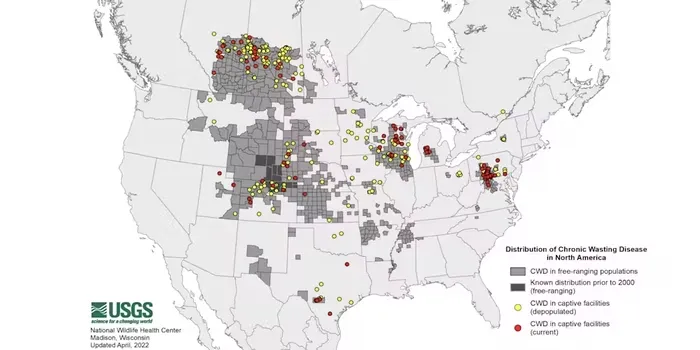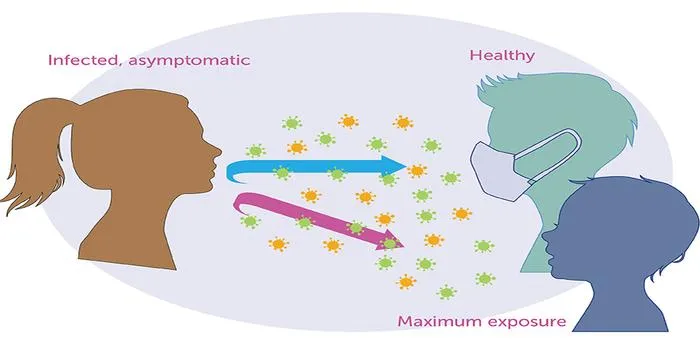- Home >
- Science
- > Exploration
What is chronic wasting disease? A wildlife scientist explains the fatal prion infection killing deer and elk across North America
Chronic wasting disease (CWD) is a contagious and fatal prion disease affecting deer, elk, and moose populations across North America. It is caused by abnormal proteins that damage brain tissue, leading to severe weight loss, behavioral changes, and ultimately death. The disease spreads through direct contact with infected animals or contaminated environments. CWD is of significant concern to wildlife scientists due to its potential impact on wildlife populations, ecosystems, and the hunting economy, with no known cure or vaccine available.

Chronic Wasting Disease (CWD) is a fatal neurological disorder affecting deer, elk, and other members of the cervid family. It is caused by abnormal proteins known as prions, which lead to degenerative changes in the brain. As a wildlife scientist specializing in prion diseases, I aim to shed light on this concerning issue that is impacting wildlife populations across North America.
Understanding Prions and CWD
Prions are misfolded proteins that can induce other proteins to also misfold, leading to a cascade of neurological damage. In the case of CWD, these prions accumulate in the brain and lymphatic tissues, resulting in a range of symptoms including severe weight loss, behavioral changes, and eventually death. The disease is primarily transmitted through direct contact between infected and healthy animals or indirectly through contaminated environments.
Symptoms of Chronic Wasting Disease
Recognizing the symptoms of CWD is crucial for wildlife management. The following table summarizes the key symptoms associated with this disease:
| Symptom | Description |
|---|---|
| Weight Loss | Severe emaciation is one of the most noticeable signs. |
| Behavioral Changes | Animals may exhibit abnormal behavior, such as lack of fear of humans. |
| Drooling | Excessive drooling can be observed in affected animals. |
| Staggering | Coordination problems leading to stumbling or lack of balance. |
| Listlessness | Animals may appear lethargic and unresponsive. |
Geographic Spread of CWD
Chronic Wasting Disease was first identified in Colorado in the late 1960s but has since spread to over 26 states in the U.S. and parts of Canada. The following chart illustrates the distribution of CWD across North America:
| Region | Status |
|---|---|
| Midwest | Highly affected, with numerous confirmed cases. |
| Southeast | Emerging cases; risk of further spread. |
| Northeast | Limited cases but monitoring is ongoing. |
| Western States | Widespread presence in several states. |
Transmission and Risk Factors
The transmission of CWD is primarily through direct contact between animals, but environmental contamination plays a significant role as well. Prions can persist in the environment for years, making eradication challenging. Key risk factors for the spread of CWD include:
- High population density of cervids
- Movement of infected animals
- Environmental factors that favor prion survival
- Human activities such as hunting and feeding
Implications for Wildlife Management
The emergence and spread of Chronic Wasting Disease pose significant challenges for wildlife management agencies. The following strategies are being implemented to combat CWD:
- Monitoring and surveillance of deer and elk populations
- Public education on the risks of CWD and preventive measures
- Regulations on deer feeding and baiting
- Testing of harvested animals for CWD
Effective management requires collaboration among wildlife agencies, hunters, and the public to minimize the risk of disease spread.
Prevention and Safety Measures
For hunters and outdoor enthusiasts, taking precautions is essential to prevent the spread of CWD. Here are some recommended safety measures:
- Avoid hunting in areas known to have CWD.
- Do not feed deer or elk in areas where CWD is present.
- Have harvested animals tested for CWD, especially if they show symptoms.
- Dispose of carcasses properly and avoid leaving remains in the wild.
Conclusion
Chronic Wasting Disease remains a pressing concern for wildlife populations in North America. As a prion disease with no known cure, its impact on deer and elk populations can have cascading effects on ecosystems and hunting communities. Awareness, monitoring, and responsible wildlife management practices are essential in mitigating the risks associated with CWD. It is crucial for everyone to stay informed and engaged in efforts to combat this deadly disease.












